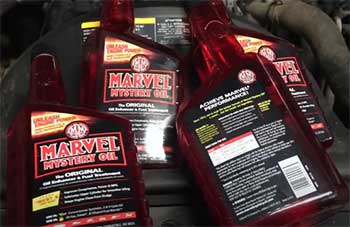I’m not one to beat around the bush, so let me get straight to it: if your car’s fuel pump is on its last legs, you need a HELLA fuel pump. I’ve been through the wringer with my car’s fuel system, and after testing this pump, I’m convinced it’s a game-changer.
It’s reliable, efficient, and won’t leave you stranded on the side of the road. Whether you’re a DIY mechanic or just someone who wants their car to run smoothly, this pump delivers. Trust me, your engine will thank you for making this choice.
My Experience With The HELLA Fuel Pump
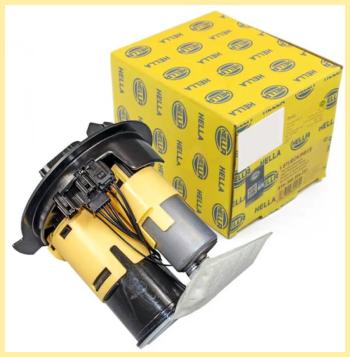
A few months back, my 2004 BMW 330i started acting up.
It’d sputter when I hit the gas, and climbing hills felt like my car was begging for mercy.
I knew the fuel pump was the likely culprit—classic symptoms, right?
After some research, I landed on the HELLA fuel pump, specifically the 358106241 model, because it promised OEM quality at a fraction of the cost.
I was skeptical, but the reviews were solid, and my wallet wasn’t exactly begging for a $400 OEM part.
Installing it was a breeze, even for someone like me who’s more “enthusiastic amateur” than pro mechanic. The pump came with a gasket, which was a nice touch, and it fit my E46 like a glove. No weird modifications or swearing matches with misaligned parts.
Once it was in, I turned the key, and the car roared to life. The difference was night and day—smooth acceleration, no more hiccups, and that satisfying hum of a healthy engine. I took it for a spin, pushing it up a steep incline, and it didn’t even flinch.
What really impressed me was the consistency. I’ve put about 5,000 miles on it since, including some long road trips, and it’s been rock-solid. No buzzing, no whining, just quiet, reliable performance.
I even noticed a slight uptick in fuel efficiency, probably because the pump’s delivering a steady flow to the engine. My only gripe? It’s a tad noisier than the original VDO pump when idling, but it’s not like I’m meditating in my car.
For the price—about $120 on Amazon—it’s hard to complain. This pump gave my car a new lease on life, and I’m not looking back.
What Makes The HELLA Fuel Pump Stand Out?
Let’s talk about why this pump deserves a spot in your car. HELLA’s been in the game for over a century, and they’re not just slapping their name on random parts. Their fuel pumps are designed with precision, built to handle the demands of modern engines, and tested to meet high standards.
I’m talking stable fuel pressure, optimal flow rates, and low power draw, which means your car runs efficiently without overworking the pump. Plus, they’re engineered to fit a wide range of vehicles, so whether you’re driving a BMW, Audi, or even a Fiat, there’s likely a HELLA pump for you.
The real kicker is the build quality. When I held the pump in my hands, it felt solid—not like some flimsy aftermarket part that’ll crap out in a year. The materials are durable, and the design screams attention to detail.
HELLA claims their pumps can last up to 150,000 kilometers if maintained properly, and based on my experience so far, I believe it. It’s not just about getting you from point A to point B; it’s about doing it reliably for years. And let’s be real, nobody wants to drop their fuel tank twice because of a cheap pump.
Pros of The HELLA Fuel Pump
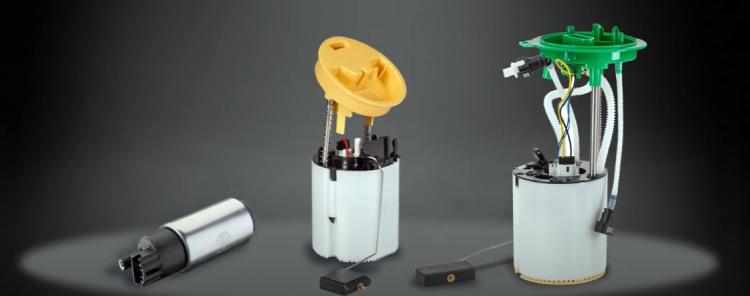
- High-Quality Construction
When you’re shelling out for a fuel pump, you want something that’s built to last. The HELLA fuel pump delivers on that front. It’s made with robust materials that can withstand the harsh environment inside your fuel tank.
I was impressed by how sturdy it felt compared to some other aftermarket options I’ve seen. The pump’s design ensures it can handle high-pressure demands without breaking a sweat, which is crucial for performance cars or even daily drivers that see a lot of stop-and-go traffic.
- Easy Installation
If you’ve ever tackled a fuel pump replacement, you know it’s not exactly a walk in the park. But HELLA makes it as painless as possible. The pump comes with everything you need, including a gasket, and it’s designed to fit seamlessly into your vehicle’s fuel system.
I had mine installed in under two hours, and I’m no pro. The instructions were clear, and the fit was perfect—no need for hacks or extra parts. Even if you’re paying a mechanic, the straightforward design means less labor time, which saves you cash.
- Reliable Performance
This is where the HELLA pump shines. It delivers consistent fuel pressure, which translates to smooth engine performance. Whether you’re cruising on the highway or stuck in city traffic, you won’t notice any surging or hesitation.
I’ve driven in all sorts of conditions—hot summer days, cold mornings, long hauls—and the pump hasn’t skipped a beat. It’s like the unsung hero of my car, quietly doing its job so I can focus on the road.
- Cost-Effective
Let’s talk money. OEM pumps can cost an arm and a leg, but the HELLA pump gives you near-OEM quality for way less. I paid about a third of what a BMW-branded pump would’ve cost, and I haven’t sacrificed performance.
It’s a no-brainer for anyone on a budget who still wants a reliable part. Plus, the durability means you’re not replacing it every couple of years, which adds to the savings.
- Wide Vehicle Compatibility
One thing I love about HELLA is their market coverage. Their pumps work with a ton of makes and models, from European cars like VW and Audi to Japanese and American vehicles.
This versatility means you’re likely to find a HELLA pump that fits your ride, no matter what you drive. It’s a huge plus for multi-car households or mechanics who work on different vehicles.
Cons of The HELLA Fuel Pump
- Slightly Noisier Operation

I’ll be honest: the HELLA pump isn’t silent.
Compared to my original VDO pump, it’s a bit louder at idle.
It’s not a dealbreaker—more like a faint hum you notice when the radio’s off—but it’s there.
Some Amazon reviews mentioned the same thing, with a few folks saying it started whistling after a few weeks.
Mine hasn’t gotten worse, but if you’re sensitive to noise, it’s something to keep in mind.
- Mixed Longevity Reports
While my pump’s been stellar so far, I dug into forums and found some mixed feedback on longevity. Most users rave about HELLA pumps lasting years, but a few reported failures after 20,000 miles or so. It’s not a widespread issue, but it’s worth noting.
Contaminated fuel or poor maintenance can kill any pump, so I’m not sure if it’s the pump’s fault or user error. Still, it’s something to watch.
- No Premium Branding Appeal
If you’re the type who loves OEM or big-name brands like Bosch, HELLA might feel like a step down. It’s a respected brand, but it doesn’t have the same cachet as some competitors.
For me, performance matters more than the logo, but I get it—some folks want that “premium” vibe. HELLA’s more about function than flash, which might not thrill everyone.
Maintenance Tips For Your HELLA Fuel Pump
- Use High-Quality Fuel
Your fuel pump’s worst enemy is bad gas. Cheap, low-grade fuel can introduce dirt and debris that clog the pump or wear it down over time. HELLA recommends sticking to at least 95 MON for petrol or 46–60 CN for diesel.
I always fill up at reputable stations, and I avoid letting my tank dip below a quarter. It’s a simple habit that keeps your pump happy and your engine running smoothly.
- Replace the Fuel Filter Regularly
A clogged fuel filter is like choking your pump—it has to work harder, which shortens its life. HELLA suggests swapping out external filters every 20,000 kilometers and internal ones every 90,000–100,000 kilometers.
I replaced mine when I installed the pump, and it made a noticeable difference in performance. Check your car’s manual for the exact schedule, but don’t skip this step. It’s cheap insurance for your pump.
- Keep Your Fuel Tank Clean
Over time, gunk builds up at the bottom of your fuel tank, especially in older cars like mine. That debris can get sucked into the pump and cause trouble. If you’re replacing your pump, consider having the tank cleaned while it’s out.
I didn’t do this (oops), but I’ve since started using a fuel system cleaner every few months to keep things tidy. It’s not perfect, but it helps.
- Avoid Running on Empty
Driving with a low tank is a rookie mistake. When your fuel level’s low, the pump can suck up sediment from the tank’s bottom, which wears it out faster. Plus, the pump relies on fuel to stay cool, so running on empty can overheat it.
I try to fill up when I hit a quarter tank, and it’s become second nature. Your pump will last longer if you do the same.
- Check for Leaks After Installation
After you or your mechanic install the pump, double-check for leaks. A loose connection or damaged gasket can cause fuel to seep out, which is dangerous and bad for the pump. I gave my setup a thorough once-over after installation, tightening everything just to be safe.
It’s a quick step that can save you headaches down the road.
Comparison of HELLA Fuel Pump With Other Brands
- HELLA Vs. Quantum Fuel Pump

Quantum fuel pumps are a solid choice, especially if you’re looking for something budget-friendly yet reliable.
I’ve seen Quantum pumps pop up a lot in forums for American and Japanese cars, and they’ve got a reputation for decent performance.
Priced around $80–$120, they’re in the same ballpark as HELLA, which I snagged for about $120.
Quantum’s pumps are designed to meet OEM specs, and users often praise their consistent fuel delivery and easy installation.
I found the HELLA pump’s fitment to be spot-on for my BMW, and Quantum seems to offer similar compatibility, covering a wide range of vehicles from Fords to Toyotas.
Where HELLA pulls ahead is in build quality. The Quantum pump I inspected at a friend’s garage felt a bit lighter, and some reviews mention plastic components that don’t inspire confidence for long-term use. HELLA’s sturdier construction gave me more peace of mind, especially since my car’s a daily driver.
That said, Quantum has a slight edge in noise levels—users report it’s quieter at idle than HELLA, which has a faint hum. If you’re after a budget pump and don’t mind a slightly less robust build, Quantum’s a strong contender. But for me, HELLA’s durability and OEM-level engineering tip the scales.
- HELLA Vs. US Motor Works Fuel Pump
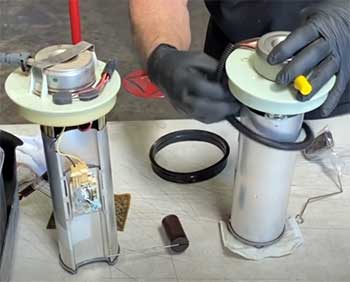
US Motor Works is another player in the aftermarket fuel pump game, often priced between $70 and $100, making it one of the cheaper options out there.
I considered their pumps for my BMW but leaned toward HELLA after reading mixed feedback.
US Motor Works pumps are popular for older vehicles and domestic brands like Chevy and Dodge, and they’re marketed as reliable replacements.
A buddy who used one in his ’98 Mustang said it got the job done, with no issues after 10,000 miles.
However, US Motor Works doesn’t match HELLA’s versatility. While HELLA fits a broad range of European, Japanese, and American cars, US Motor Works leans heavily toward domestic models, so it’s less likely to work for, say, a VW or Audi.
Performance-wise, both pumps deliver steady fuel pressure, but HELLA’s design feels more refined. Some US Motor Works users on Reddit mentioned issues with fuel gauge inaccuracies, which I haven’t experienced with my HELLA pump.
Another downside is longevity—US Motor Works pumps seem to average 5–7 years, while HELLA’s rated for up to 150,000 kilometers (about 93,000 miles) with proper care. If you’re fixing up an older American car on a tight budget, US Motor Works is fine, but HELLA’s broader compatibility and better durability make it my pick.
- HELLA Vs. KEMSO Fuel Pump
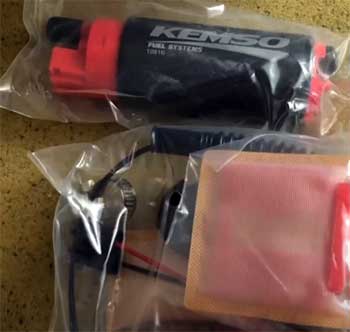
KEMSO fuel pumps are the wildcard here, often priced at rock-bottom rates—sometimes as low as $50–$80.
They’re a go-to for DIYers on a shoestring budget, and I’ll admit, the price tempted me when I was shopping.
KEMSO pumps are marketed for a variety of vehicles, particularly Japanese and Korean models, and they claim to meet OEM standards.
A few folks on Fuelly forums said their KEMSO pumps worked well initially, with easy installs and decent performance for daily driving.
But here’s the rub: KEMSO’s quality control seems inconsistent. Reviews are a mixed bag, with some pumps failing within a year or causing issues like weak fuel pressure or noisy operation. My HELLA pump, by contrast, has been rock-solid for 5,000 miles, with no hiccups.
KEMSO’s lightweight construction also feels less substantial—when I checked one out, it didn’t have the same hefty, confidence-inspiring feel as HELLA. Another point in HELLA’s favor is its reputation; KEMSO’s a lesser-known brand, while HELLA’s been a trusted name for over a century, supplying OEM parts to big players like BMW.
If you’re rolling the dice on a cheap fix for a beater car, KEMSO might do the trick. But for reliability and peace of mind, I’d stick with HELLA every time.
Frequently Asked Questions (FAQ)
Yes, HELLA makes excellent fuel pumps. Based on my experience and research, their pumps offer near-OEM performance at a lower price. They’re built with durable materials, deliver consistent fuel pressure, and fit a wide range of vehicles. While some users report noise or occasional early failures, these are rare and often tied to poor maintenance. For most drivers, a HELLA pump is a reliable, cost-effective choice.
Absolutely. HELLA’s been a trusted name in automotive parts for over 100 years, known for everything from lighting to electronics. Their fuel pumps, in particular, benefit from their OEM expertise, as they supply parts to brands like BMW and VW. While they may not have Bosch’s premium reputation, HELLA’s quality is top-tier for the price. I’ve used their sensors and pumps, and they’ve never let me down.
It depends on your needs. Bosch is often considered the best for its durability and quiet operation, but it’s expensive. VDO and Denso are great for specific vehicles (European and Japanese, respectively) and offer OEM quality. HELLA stands out for its balance of performance, price, and compatibility. For most drivers, including me, HELLA’s a fantastic choice unless you need a premium brand or a vehicle-specific pump.
A fuel pump should last 7–10 years or about 100,000–150,000 miles, depending on maintenance and driving habits. HELLA claims their pumps can hit 150,000 kilometers (roughly 93,000 miles) with proper care. Factors like contaminated fuel, running on empty, or skipping filter changes can shorten its life. My HELLA pump’s still going strong, and with regular maintenance, I expect it to last at least a decade.
Conclusion: Get Yourself A HELLA Fuel Pump
After months of driving with my HELLA fuel pump, I can say it’s one of the best upgrades I’ve made to my car. It’s reliable, affordable, and easy to install, making it a no-brainer for anyone facing fuel system woes.
Whether you’re a gearhead or just want your car to run like it should, this pump won’t disappoint. Don’t waste time with cheap knockoffs—grab a HELLA pump and hit the road with confidence. Your car deserves it, and so do you.
